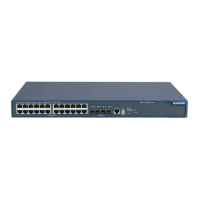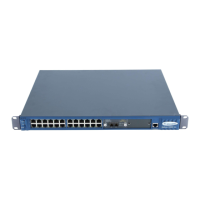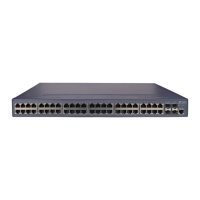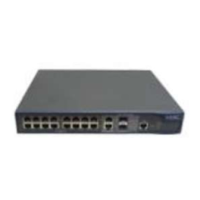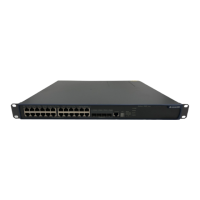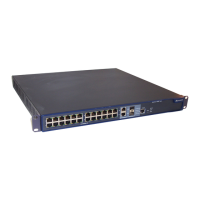Huawei Technologies Proprietary
1-2
z Software upgrading and parameter configuring can be performed simultaneously
on multiple switches.
z Free of topology and distance limitations
z Saving IP address resource
HGMP V2 is comprised of the following three protocols:
z Neighbor discovery protocol (NDP): HGMP V2 implements NDP to discover the
information about the directly connected neighbor devices, including device type,
software/hardware version, connecting port and so on. The information such as
device ID, port mode (duplex or half duplex), product version, and BootROM
version can also be given.
z Neighbor topology discovery protocol (NTDP): HGMP V2 implements NTDP to
collect the information about the network topology, including the device
connections and the device information in the network. The hop range for topology
discovery can be adjusted manually.
z Cluster management protocol: The cluster management protocol provides the
member recognition and member management function. It cal also perform
large-scaled device management together with the network administrator.
Member recognition means that the management device recognizes each
member in the cluster through locating each member and then distributes the
configuration and management commands to members. Member management
means to manage the following events through the management device, including
adding a member, removing a member, and the member’s authentication on the
management device. Member management also manages the cluster parameters
including interval of sending handshake packets, management VLAN of the
cluster, public FTP server of the cluster.
Cluster-related configurations are described in the following sections.
1.1.2 Introduction to NDP
NDP is the protocol for discovering the information about the adjacent nodes. NDP
operates on the data link layer, so it supports different network layer protocols.
NDP is used to discover the information about directly connected neighbors, including
the device type, software/hardware version, and connecting port of the adjacent
devices. It can also provide the information concerning device ID, port simplex/duplex
status, product version, Bootrom version and so on.
An NDP-enabled device maintains an NDP information table. Each entry in an NDP
table ages with time. You can also clear the current NDP information manually to have
adjacent information collected again.
An NDP-enabled device broadcasts NDP packets regularly to all ports in up state. An
NDP packet carries the holdtime field, which indicates the period for the receiving
devices to keep the NDP data. Receiving devices only store the information carried in

